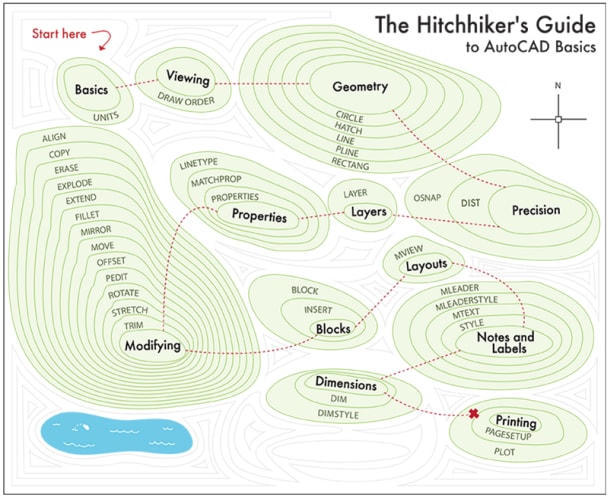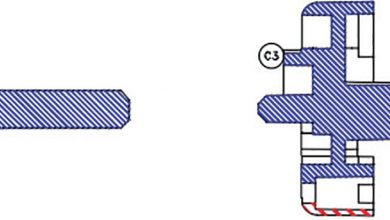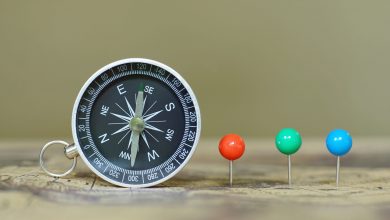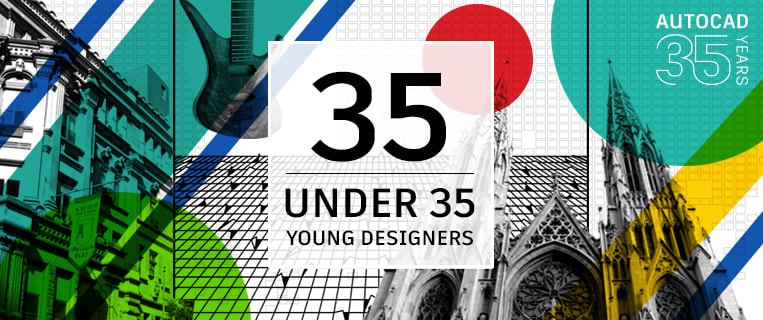
Customer Spotlight
Leah E. Friedman

We can’t wait for you to meet the newest additions to our AutoCAD 35 Under 35 young designers list. Included this month in numbers 21 through 25 are a paper sculptor, designers of spectacular lighting, the founder of a Ghana-based company that teaches AutoCAD to kids, and an IoT innovator. Meet them below.
[First Five / Second Five / Third Five / Fourth Five / Fifth Five / Sixth Five / Seventh Five]Contents
The Fifth Five
Sam Davey, 29, associate designer at Electrolight (USA/Australia) & Lu-YuHuang, 33, associate designer at Electrolight (USA/Taiwan)
Though they come from different backgrounds, together, Lu and Sam create stunning light designs for San Francisco-based Electrolight – and much of the drafting, detailing, and dimensioning is done right in AutoCAD. “When it comes down to how we’re actually going to make it all work (the serious stuff), it’s all done in AutoCAD,” Sam says.
Sam studied Industrial Design at Swinburne University of Technology in Melbourne, Victoria, Australia, but didn’t really work with AutoCAD until he entered the workforce, saying “It’s been the main program that I’ve used every single day for a lighting design company.” Lu, on the other hand, first encountered AutoCAD in college, when he studied for his degree in Theater Design and Technology from Taipei National University of the Arts in Taipei, Taiwan, and continued when he pursued a Master of Entertainment Technology from Carnegie Mellon in Pittsburgh, Pennsylvania.
Between the two of them, they’ve designed lighting for projects as different as YouTube headquarters in San Bruno, California, the Hub Performance and Exhibition Center in Shanghai, China, Crown Towers Casino in Perth, Australia, and are currently working on the design for a large tech campus in the San Francisco Bay Area.
 Lindsey Bacon, 27, founder and executive director of Conscious Collaborative; co-founder of AnansiInternational (USA/Ghana)
Lindsey Bacon, 27, founder and executive director of Conscious Collaborative; co-founder of AnansiInternational (USA/Ghana)
After falling in love with Ghana upon her first visit six years ago, Lindsey has founded two organizations to lift up its citizens and communities. The first, Conscious Collaborative, is a non-profit that works in the fishing villages of Ghana to empower youth and women. The second, Anansi International, aims to train disadvantaged youth in AutoCAD so that they can find meaningful employment. Anansi International is using AutoCAD to empower a generation of young people to use technology as not only a means of employment, but also as a way to create solutions to some of the most pressing issues facing their communities.
 Junfeng Shi, 29, CEO of Nature & Future (China)
Junfeng Shi, 29, CEO of Nature & Future (China)
Junfeng’s company, Nature & Future, is an IoT (Internet of Things) startup in China that brings nature to highly urbanized areas of China. Nature & Future’s connected technology allows people to maintain everything from individual plants to whole gardens in urban buildings remotely via smart phones. After graduating from Tsinghua University Academy of Fine Arts, he decided to start the company with some college classmates. The primary goal is to create an intelligent indoor garden, but also redefine what it means to be a designer. By using AutoCAD to draft and model his products designs, he provides the opportunity to be both artist and technologist.
Jeff Morrical, 35, artist and owner of JeffMorricalStudio (USA)
The work of Los Angeles, California-based artist Jeff Morrical incorporates single sheet paper sculptures shaped by folds and gravity. With a background in architecture, and a masters from SCI-Arc, finding form, structure, and pattern in everyday materials has always been a driving force in his work. He uses AutoCAD to design 2-dimensional patterns and graphics on large custom sheets of paper that correspond with the 3-dimensional forms created through the folding process. This synthesis of patterns and folds results in light and whimsical paper forms that take on a life of their own.
We’ll be announcing the rest of our list in the coming months. Keep watching this space for more on how these innovators are contributing to the future of making things, and how they’re using AutoCAD to do it.
Source: Autodesk
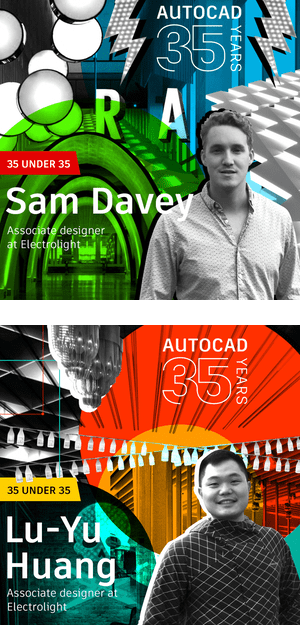
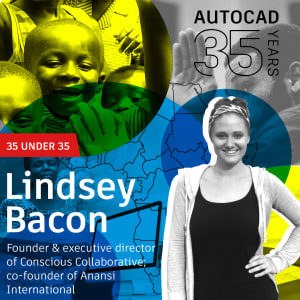 Lindsey Bacon, 27, founder and executive director of Conscious Collaborative; co-founder of AnansiInternational (USA/Ghana)
Lindsey Bacon, 27, founder and executive director of Conscious Collaborative; co-founder of AnansiInternational (USA/Ghana)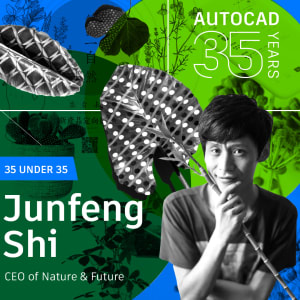 Junfeng Shi, 29, CEO of Nature & Future (China)
Junfeng Shi, 29, CEO of Nature & Future (China)


